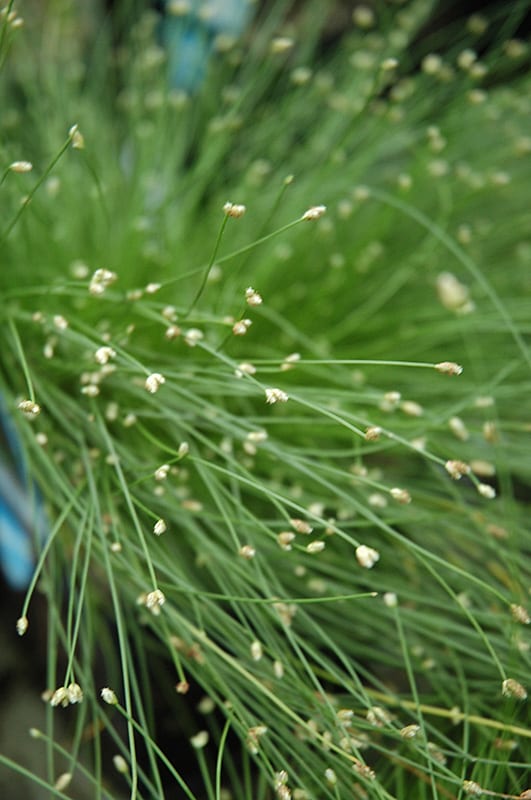Images provided by NetPS Plant Finder Tool
Fiber Optic Grass
This interesting plant has a beautiful mounded form with tiny silver flowers on the end resembling fiber optics, great for the perpetually wet or boggy area, it provides an interesting fine texture
Please contact your local store for product availability.
Find a garden center near you.
Species: cernuus
Other Species Names: syn. Isolepis cernua, Fiber Optic Grass
Plant Height: 12 in.
Spread: 24 in.
Evergreen: No
Plant Form: arching
Emergent Foliage Color: light green
Summer Foliage Color: green
Minimum Sunlight: partial shade
Maximum Sunlight: full sun
Fiber Optic Grass is covered in stunning silver pea-like flowers at the ends of the stems from early summer to mid fall. Its tiny threadlike leaves emerge light green in spring, turning green in color throughout the season. The fruit is not ornamentally significant.
Fiber Optic Grassh is an herbaceous perennial with a shapely form and gracefully arching foliage. It brings an extremely fine and delicate texture to the garden composition and should be used to full effect.This is a relatively low maintenance plant, and should be cut back in late fall in preparation for winter. It has no significant negative characteristics.Low Bulrush is recommended for the following landscape applications;Mass PlantingBorder EdgingGeneral Garden UseContainer PlantingBog Gardens
Fiber Optic Grass will grow to be about 12 inches tall at maturity, with a spread of 24 inches. It grows at a medium rate, and under ideal conditions can be expected to live for approximately 4 years.This plant does best in full sun to partial shade. It prefers to grow in moist to wet soil, and will even tolerate some standing water. It is not particular as to soil type or pH. It is somewhat tolerant of urban pollution. This species is not originally from North America. It can be propagated by division.Fiber Optic Grass is a fine choice for the garden, but it is also a good selection for planting in outdoor pots and containers. It is often used as a 'filler' in the 'spiller-thriller-filler' container combination, providing a mass of flowers against which the thriller plants stand out. Note that when growing plants in outdoor containers and baskets, they may require more frequent waterings than they would in the yard or garden.
